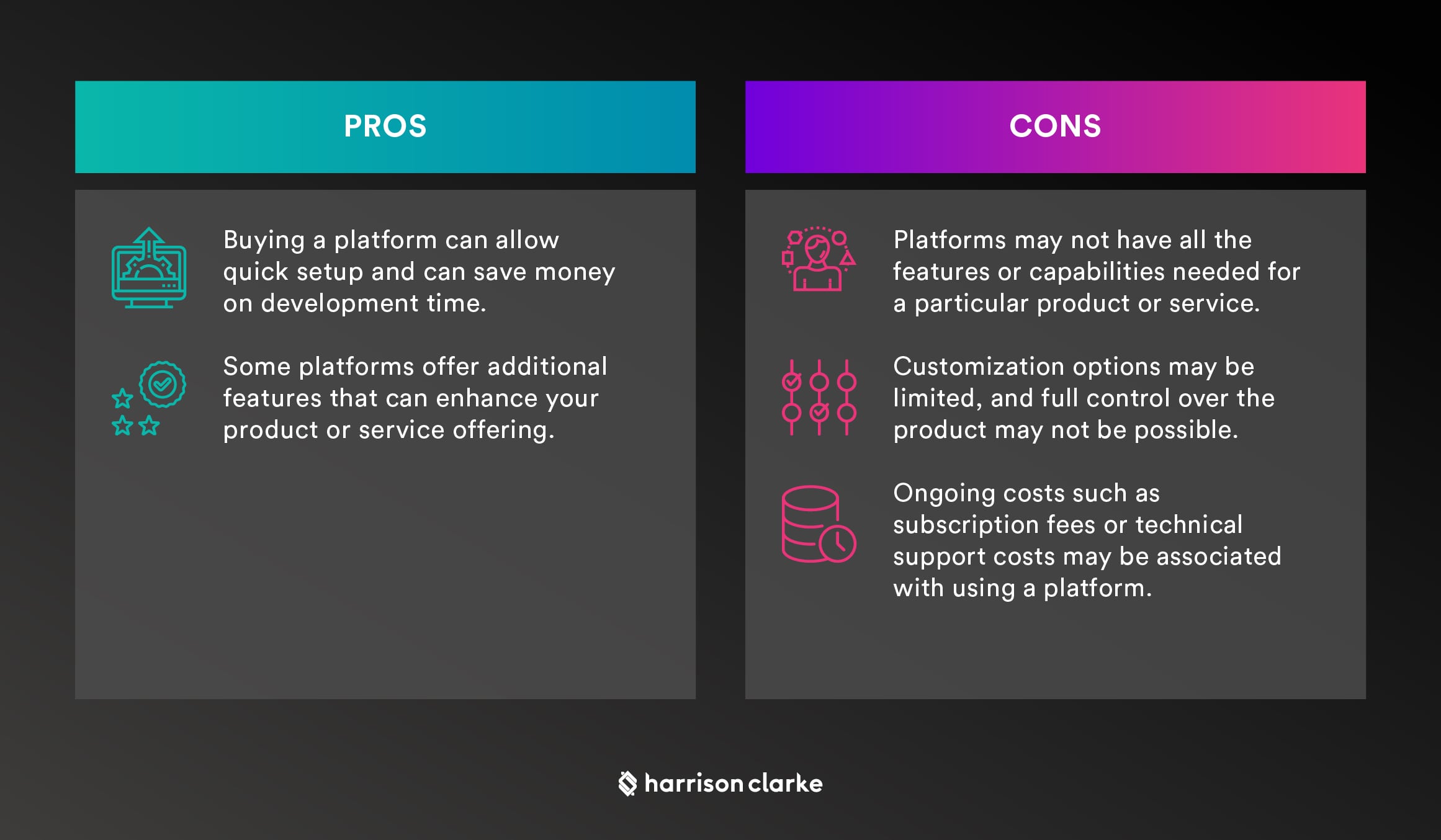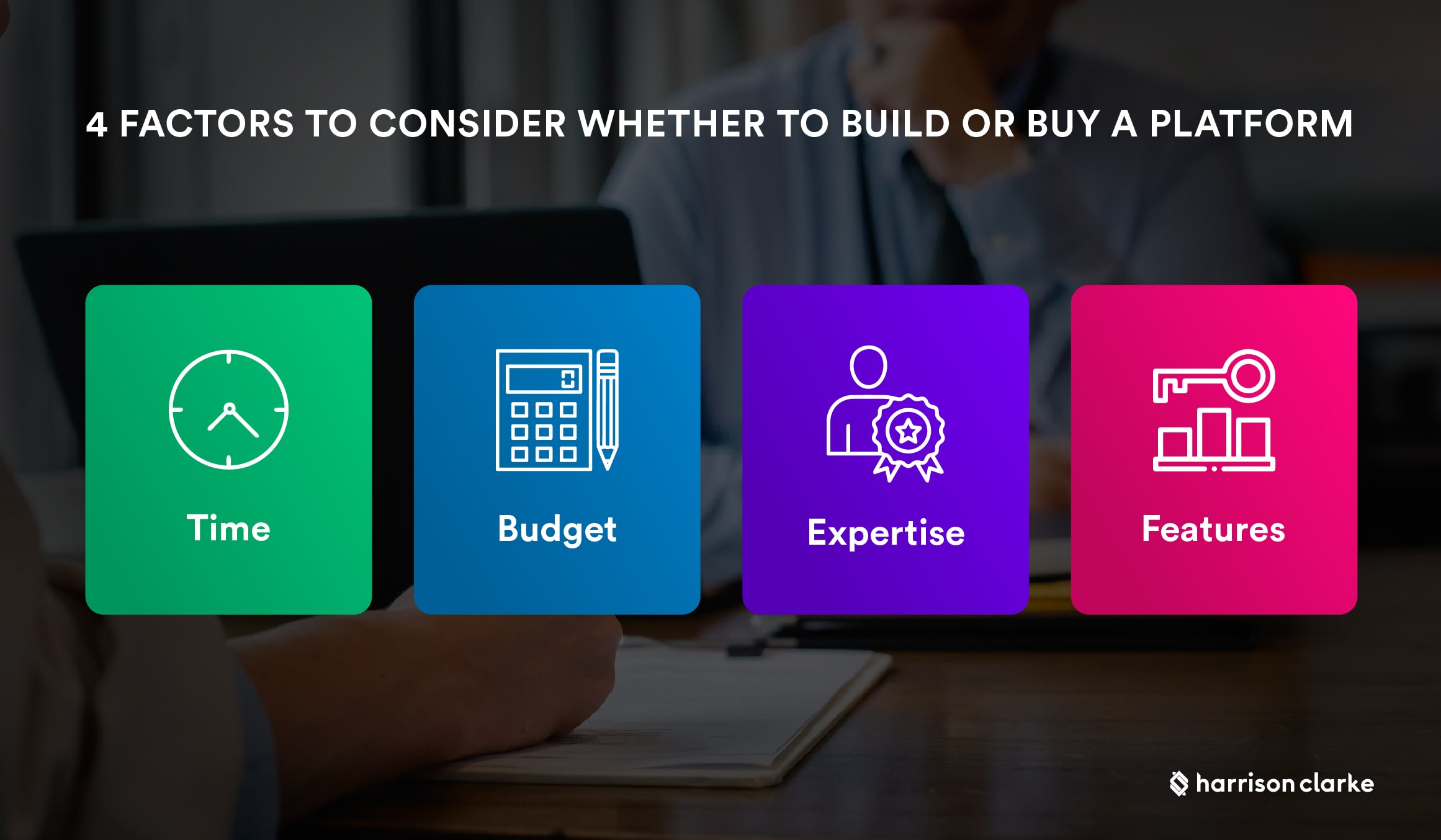When it comes to developing a platform for your business, you may be faced with the difficult decision of whether to build or buy one. While there are significant advantages and disadvantages to each approach, understanding them is essential when making an informed decision. Let’s explore the pros and cons of building vs buying a platform for your business.
The Pros and Cons of Buying a Platform

One of the main advantages of buying a platform is that it allows you to get up and running quickly, which can be beneficial if you need to launch your product as soon as possible. Additionally, depending on the platform you choose, you may be able to save money since it usually requires less development time than building from scratch. Finally, some platforms offer additional features that can help enhance your product or service offering.
On the other hand, there are some drawbacks to buying a platform. Depending on the product or service you’re offering, it may not have all of the features or capabilities that you need. Additionally, many platforms limit customization options so you may not have full control over how your product looks and functions. Lastly, depending on which platform you choose, there may be ongoing costs associated with using it such as subscription fees or technical support costs.
Factors to Consider

When deciding whether to build or buy a platform for your business, there are several factors that must be weighed in order to make an informed decision. The first factor is budget; if cost is an issue then buying a platform may be more feasible than building one from scratch. If time is also a consideration then building a custom solution might not be an option since this could take months (or even years) whereas purchasing one could happen much quicker.
Furthermore, consider any in-house expertise that could help in either situation; if coding isn’t part of your team’s skill set then building from scratch might not be feasible and buying would likely work best in this case. Finally, consider what features are needed for your product or service; if certain features aren’t available off-the-shelf then building from scratch would likely provide more flexibility in this regard.
Examples

For example, Twitter was built from scratch in 2006 by Jack Dorsey and his team who had no previous experience in software engineering; however they were able to successfully develop their own platform due largely in part to their drive and determination coupled with outside financial backing from venture capitalists such as Union Square Ventures who invested $25 million into Twitter's development efforts at its early stages which allowed them access to more resources than they would have had otherwise been able to access on their own without taking on investors which ultimately gave them the resources they needed to bring their vision into reality without having to purchase an existing platform instead.
Ultimately, the decision to build or buy a platform for your business can be a tough one. However, by understanding the advantages and disadvantages of both approaches, you can make an informed decision that suits your specific needs. Consider key factors such as budget, timeline, and available resources, and carefully weigh the pros and cons of each option. Additionally, keep in mind that what works best for your business now may not be the best choice in the future. As technology continues to evolve, it's important to remain flexible and adaptable in the face of potential changes and challenges. By taking all of these factors into account, you can make a choice that meets your current needs while also setting you up for success in the years to come.



